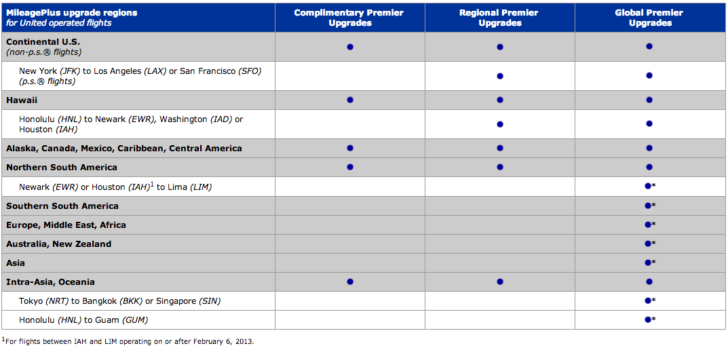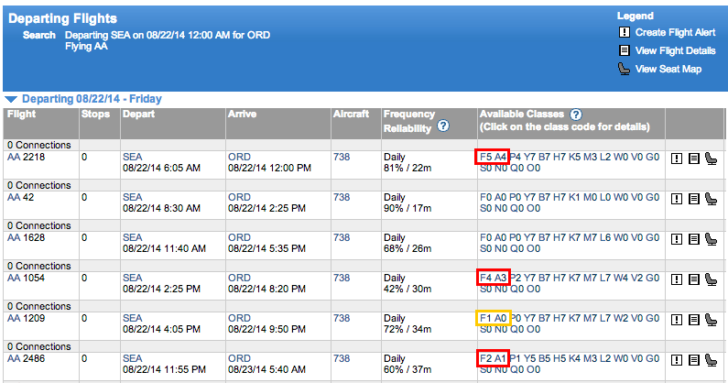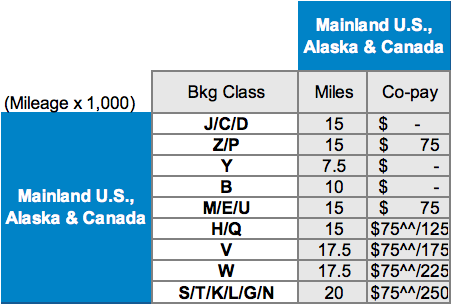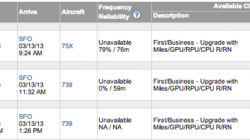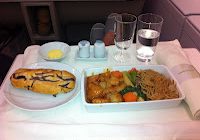About the only thing worse than waiting in a security line or the crowded airport terminal is actually sitting in coach. Seat 32B, to be exact. As you enter the plane and prepare yourself for the next four hours of misery, you’ll probably pass some happier passengers sipping on pre-departure beverages and sprawling across their roomy first class seats.
So why aren’t you joining them?
Upgrades do cost something, whether that payment comes in the form of money, frequent flier miles, or elite status. But you probably already have what it takes to sit up front or can find a way to make the jump more affordable.
Complimentary Elite Upgrades
Most of the first class upgrades go to elite frequent fliers who receive them as complimentary benefits on domestic routes. Although paid and award upgrades have priority, there often aren’t enough to fill all the empty seats. The trick to getting upgraded is thus two-fold: get status and choose the right flights.
Consolidate your travel onto one carrier or alliance rather than distributing it among several airlines. If it costs a bit more, compare that to what you might save in other benefits like upgrades, priority seat assignments, and various waived fees. But if you plan to fly within an alliance, remember that complimentary upgrades generally go only to members who have elite status with the operating carrier. American Airlines would rather upgrade a member of its AAdvantage program before it considers anyone from Cathay Pacific’s Marco Polo Club.
Choosing your flights wisely is more complicated but simple enough in theory: fly when no one else wants to fly. So leave on a Saturday morning after everyone’s returned home from their business trips or left for the weekend. Connections help, too. No one likes to go out of their way, and these routes have more price-sensitive and typically less frequent travelers. As an added bonus, you might save money when compared to non-stop routes favored by road warriors traveling on the company’s dime.
Read up on each carrier’s unique rules that govern its upgrade policy. American gives priority to connecting passengers, for example, and considers the time of the upgrade request (often when the flight was booked). United penalizes a couple traveling together because there must be upgrade space for both or else the system skips over to the next single passenger. It also ranks passengers by the fare paid; sometimes spending $10 more for a higher booking class can increase your position in the upgrade queue.
Paid Upgrades
In the days leading up to departure, upgrade inventory doesn’t quite match the number of first class seats available because an airline hopes to sell them at full price. But the numbers can track closely. Faced with a choice between giving a seat away for free or collecting at least some extra cash, money takes priority over rewarding loyal passengers.
Upgrades can often be purchased at a discount to the true cost of a first class ticket. Some carriers offer this option at check-in or when you view your itinerary online, while others may have a fixed price or auction system at the gate. Rules vary greatly between carriers. Unlike if you purchased a first class ticket, you’ll be treated according to the rules of the original fare. That means fewer frequent flyer miles and higher fees for schedule changes.
But there are also some fares that are sold as economy class tickets that include an automatic upgrade to first class. Often called “Y-UP” fares, they are not exactly cheap. They just happen to be less expensive than paying for first class outright and available to most people. Elite frequent fliers may be offered similar instant upgrades available when they book full-fare tickets even if they aren’t advertised with the Y-UP name.
Award Upgrades
Carriers will let you pay for a regular ticket and upgrade it later using frequent flier miles. However, many upgrades still require a co-pay, especially for the cheapest discount fares. United Airlines charges as much as 20,000 miles plus $550 each way for a business class upgrade between North America and Europe. If you want to upgrade a partner flight (e.g., using United’s miles on Lufthansa), the co-pay requirement is dropped though you will need to buy a full-fare ticket. How much money are you really saving over discounted business class?
It should be no surprise that upgrades are generally a bad use of miles. Continuing with United as an example, an upgrade within the U.S. is 20,000 miles plus $75 one-way. You could redeem a first class saver award for just 25,000 miles. But some people never save enough for a free flight, can’t find award space, or just don’t want to travel more than they already have to. Using miles in any way is better than letting them expire.
Operational Upgrades
Passengers with no extra money, no miles, and no elite status will probably only enjoy a first class experience thanks to operational upgrades, i.e., upgrades given at the discretion of the gate agent.
Is the economy class cabin oversold? Someone has to move up to first class. Or a passenger may be willing to take a later flight, with a seat in first class as compensation for the inconvenience. Never settle for the agent’s original offer, as there are many little things he or she can do in addition to handing out cash. Other issues like a disruptive passenger or an inoperative television screen might provide justification for reshuffling passengers on-board.
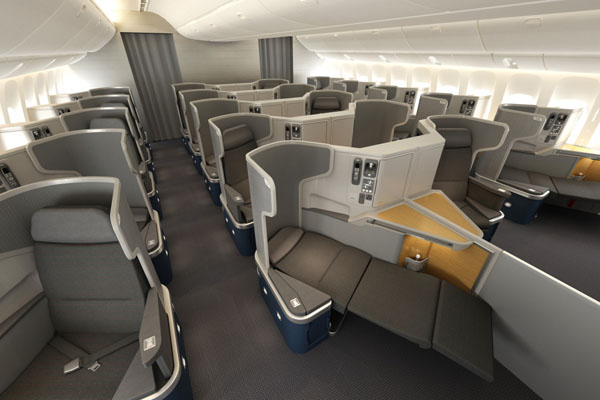
Stories about a well-dressed customer who asks for an upgrade are the exception rather than the rule. More important than how someone looks is that a seat is available, the passenger is friendly, and the agent has a problem that needs to be quickly solved. These upgrades are all about the luck of the draw. Rather than buying a new suit, consider trying out some of the other options listed above.
Note: This piece was written for and adapted by U.S. News and first appeared in the Travel Features section of usnews.com. Read the original article.

